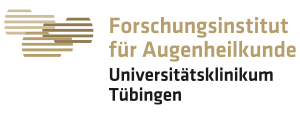Zrenner Lab
Experimental Retinal Prosthetics Group
Home » Labs » Zrenner Lab » Projects » Toward a microelectrode array (MEA)-based assay of mouse retinal…
Toward a microelectrode array (MEA)-based assay of mouse retinal function
The mouse is the mammalian model organism of choice for genetic manipulations. As such, it is appropriate and important that a bridge be built between retinal electrophysiology and mouse genetics. To achieve such a goal, the heritage of retinal electrophysiology must be collected, streamlined, and presented to the molecular biologist in a manner that is both accessible and appealing. In doing so, the large collection of techniques available to physiologists for characterizing visual responses can be accessed by molecular biologists as a simple tool through which they can evaluate the visual health of their retinas at a level of detail never before achieved.
- Aim 1: To use MEA recordings to establish a database of visual responses from the wild-type, mouse, retinal ganglion cell population; and to categorize these according to functional type.
- Aim 2: To track the development of RGC cell types in the wild-type mouse from eye opening to adulthood.
- Aim 3: Examine how the development of RGC cell types differs between the wild-type and selected mutant strains of the mouse.
| Partner | Rathbun, Hosseinzadeh François Paquet-Durand, Ayse Sahaboglu-Tekgoez, Blanca Arango-Gonzalez |
|---|---|
| Dates | fortüne funding period: 15.09.2011 – 14.09.2012; project wrap-up ongoing |
| Funding Insititution | fortüne Juniorantrag [2016-0-0] through the Förderprogramme der Medizinischen Fakultät Tübingen Interdisziplinäres Zentrum für Klinische Forschung (IZKF) |
Results
We undertook the project in collaboration with the lab of François Paquet-Durand to investigate whether such a MEA-assay would be useful in organotypic retinal cultures where other visual function measurements like ERG and VEP are not possible. Unfortunately, we found that normal retinal ganglion cell responses in organotypic culture do not appear to fully develop. Work is ongoing to optimize the culture for improved retinal health and function.
- Rathbun DL, Sahaboglu A, Arango-Gonzalez B, Zrenner E, Paquet-Durand F. “Visual Responses in the Organotypically Cultured Mouse Retina.” Association for Research in Vision and Ophthalmology (ARVO) Annual Meeting, Orlando Florida, May 2014

